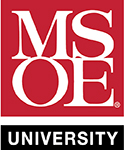Overexpressing mouse model demonstrates the protective role of Muc5ac in the lungs. Proc Natl Acad Sci U S A 2012 Oct 09;109(41):16528-33
Date
09/27/2012Pubmed ID
23012413Pubmed Central ID
PMC3478656DOI
10.1073/pnas.1206552109Scopus ID
2-s2.0-84867345602 (requires institutional sign-in at Scopus site) 150 CitationsAbstract
MUC5AC, a major gel-forming mucin expressed in the lungs, is secreted at increased rates in response to infectious agents, implying that mucins exert a protective role against inhaled pathogens. However, epidemiological and pathological studies suggest that excessive mucin secretion causes airways obstruction and inflammation. To determine whether increased MUC5AC secretion alone produces airway obstruction and/or inflammation, we generated a mouse model overexpressing Muc5ac mRNA ~20-fold in the lungs, using the rCCSP promoter. The Muc5ac cDNA was cloned from mouse lungs and tagged internally with GFP. Bronchoalveolar lavage fluid (BALF) analysis demonstrated an approximate 18-fold increase in Muc5ac protein, which formed high-molecular-weight polymers. Histopathological studies and cell counts revealed no airway mucus obstruction or inflammation in the lungs of Muc5ac-transgenic (Muc5ac-Tg) mice. Mucus clearance was preserved, implying that the excess Muc5ac secretion produced an "expanded" rather than more concentrated mucus layer, a prediction confirmed by electron microscopy. To test whether the larger mucus barrier conferred increased protection against pathogens, Muc5ac-Tg animals were challenged with PR8/H1N1 influenza viruses and showed significant decreases in infection and neutrophilic responses. Plaque assay experiments demonstrated that Muc5ac-Tg BALF and purified Muc5ac reduced infection, likely via binding to α2,3-linked sialic acids, consistent with influenza protection in vivo. In conclusion, the normal mucus transport and absence of a pulmonary phenotype in Muc5ac-Tg mice suggests that mucin hypersecretion alone is not sufficient to trigger luminal mucus plugging or airways inflammation/goblet cell hyperplasia. In contrast, increased Muc5ac secretion appears to exhibit a protective role against influenza infection.
Author List
Ehre C, Worthington EN, Liesman RM, Grubb BR, Barbier D, O'Neal WK, Sallenave JM, Pickles RJ, Boucher RCAuthor
Rachael M. Liesman PhD Associate Professor in the Pathology department at Medical College of WisconsinMESH terms used to index this publication - Major topics in bold
AnimalsBase Sequence
Blotting, Western
Bronchoalveolar Lavage Fluid
Disease Models, Animal
Gene Expression
Green Fluorescent Proteins
HEK293 Cells
Host-Pathogen Interactions
Humans
Influenza A Virus, H1N1 Subtype
Lung
Madin Darby Canine Kidney Cells
Mice
Mice, Inbred C57BL
Mice, Transgenic
Microscopy, Confocal
Microscopy, Electron
Molecular Sequence Data
Mucin 5AC
Orthomyxoviridae Infections
Reverse Transcriptase Polymerase Chain Reaction









